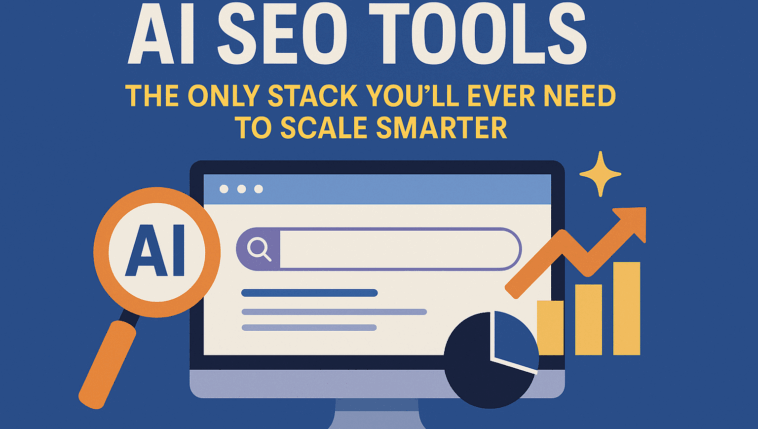
Have you ever searched for something on Google only to find exactly the answer you were looking for directly on the search results page (SERP) without having to click through to a specific website?
This is what we call Zero-Click Searches, and they can have a significant impact on those striving to implement and/or maintain existing SEO strategies for their websites.
What are Zero-Click Searches, and why are they important for SEO?
On Google’s SERP, users may sometimes find the answer they need without having to click on any of the suggested search results.
Google presents users with AI-generated text boxes, “People also ask” sections, featured snippets, and more to help them find the information they need more quickly and easily.
Zero-Click Searches are crucial to understand when it comes to SEO, as their very nature means there is no opportunity to generate clicks and visits to your website.
In other words, this leads to lower ad revenue, making it necessary from an SEO perspective to reconsider how users interact with search engines.
How Zero-Click Searches are changing the landscape of organic traffic
It’s simple: when search engines provide answers directly on the SERP, there is less organic traffic to other websites.
As a result, there is a growing competition to appear in featured snippets where users can find immediate answers.
In other words, the battle for organic traffic is shifting from website clicks back to SERP presence.
Google and Zero-Click Searches: What’s the strategy behind them?
Zero-Click Searches are part of a strategy designed to keep users on Google’s platforms for as long as possible.Since its inception in 1998, Google’s mission has been to provide users with the most relevant data and sources for their queries.
Featured snippets and AI-generated information boxes are just part of this mission to satisfy users’ need for quick and reliable information.
The strategy behind Zero-Click Searches is to remain one of users’ primary sources of information, even as many alternatives (such as social media and AI tools) become available.
The most common types of Zero-Click Searches explained
Zero-Click Searches encompass various search result types that provide users with the information they seek immediately.
Let’s go through them below.
“Featured snippet”
A featured snippet includes a text excerpt from a website that directly relates to the search query and is displayed along with the site’s title and URL.
These snippets can include a step-by-step guide, a video clip, or a small text excerpt directly from a website.
Users may get the answer they need immediately, but there is also potential for them to click through to the website for more details.
“AI overview”
Users have become accustomed to using AI tools for quick and direct answers.
For this reason, Google has integrated AI-generated overviews into search results, displaying relevant information, sources, and direct links to users’ queries.
“Direct answer”
If a query has a definitive answer, it will appear as the first result on the SERP.
Questions like “How tall is the Eiffel Tower?” or “When is Easter?” are examples of queries that do not require a link, as search engines can answer them instantly.
“People also ask”
If you didn’t find the answer you were looking for in the traditional search results, you can browse the “People also ask” section, which provides additional answers and sources.
“Knowledge panel”
The knowledge panel appears on the right side of the SERP when searching for a specific person, company, or object.
It provides a brief overview of facts, accompanied by images, sources, and links.
“Map overview”
Google’s map overview is relevant for searches looking for specific businesses, stores, etc.
This section displays businesses in the local area that match the search query, including details such as opening hours, addresses, and websites.
How to adapt your SEO strategy to a world of Zero-Click Searches
Zero-Click Searches are here to stay, and rather than resisting the trend, it’s better to adjust your SEO strategy to gain the most value.
Among the different types of Zero-Click Searches listed above, the most beneficial ones to target are featured snippets and map overviews.
These provide opportunities to boost brand awareness through concise and easy-to-understand content or step-by-step guides that encourage users to click through to your site.
In contrast, AI-generated text boxes and direct answers offer little value since users obtain the information they need in just a few seconds.
For users to click through, it’s crucial to adjust your SEO strategies. Here are some useful tips on how to do so:
- Consider how small text excerpts from your website can be used in Google’s featured snippets (short informative sentences, step-by-step guides, etc.).
- Use questions as H2 or H3 headings on your website to increase the chances of being featured in a snippet or under “People also ask.”
- Implement schema markup, a code that helps Google better understand your website’s data and highlight it more effectively.
Are Zero-Click Searches a threat to website owners’ earnings?
If you rely on organic traffic from search engines, then Zero-Click Searches will undoubtedly pose a challenge, as users will have less need to click on websites displayed in the SERP.
This makes it crucial for website owners to structure their content strategically, ensuring that Google finds their site valuable enough to generate featured snippets that entice users to click through.
For users who need more than just a short snippet to answer their query, in-depth content will always be necessary.
If your website provides such detailed information, ranking high in search results remains essential to demonstrate your site’s value.
However, Zero-Click Searches do not mean you cannot diversify traffic sources beyond search engines. Other channels, such as social media, email marketing, and influencer marketing, remain viable alternatives.
How to create value even when users don’t click?
Even if users don’t click on your website, there are still advantages to being part of featured snippets. For example, if a user finds the information they need in an excerpt from your site, this can significantly enhance brand awareness.
It’s essential that your brand is prominently displayed through text and images to build recognition, which can later be leveraged for advertising on other platforms.
The future of Zero-Click Searches: What does it mean for search behavior?
Search behavior has changed significantly, and Zero-Click Searches are a prime example of this shift.
Consumers now use a variety of search engines to find what they need, including social media, AI tools, e-commerce platforms, and Google’s own YouTube.
This trend indicates that users increasingly prefer quick and direct answers.
Instead of browsing multiple websites to find information, they now expect to obtain it in seconds through AI tools and other streamlined search solutions.
Moving forward, we should anticipate that users will continue to seek short and precise answers while still having the option to click through for more information.














Comments